| Mytilus edulis Linnaeus, 1758 |
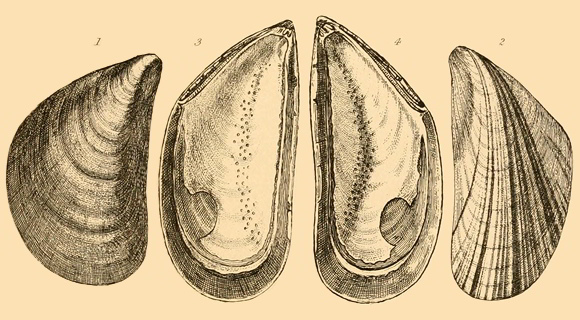 |
White Sea to S. France, NE. Canada through Saint-Lawrence Gulf to North Carolina… Introduced in various places around the world, such as the NW. Black Sea, the Chile and the southern Argentina, the Malvinas archipelago (Falkland), the Kerguelen etc., in warm and cold waters, where it lives in colonies, attached on hard substrates from intertidal grounds down to 10m deep. Abundant in the Atlantic Ocean, uncommon in Mediterranean. Filter feeder. Many synonyms.
M. edulis in Forbes & Hanley: A history of British Mollusca and their shells vol. IV, London 1853, via BHL. |
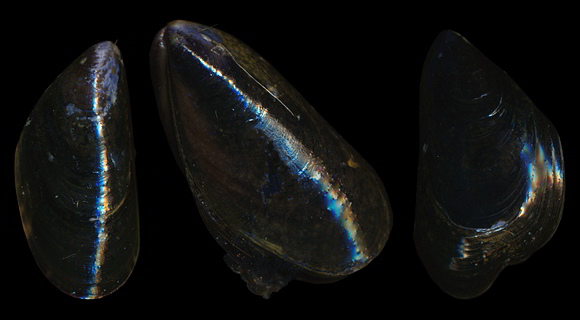 |
| Specimens collected on rocks in shallow water, El Cantal, Málaga, Andalucia, S. Spain. 28-35mm. |
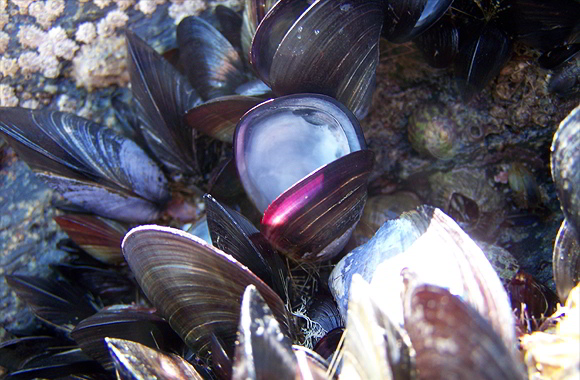 |
| A colony of “Blue Mussels” on intertidal rock, southern coast of Groix Island, S. Brittany, NW. France. |
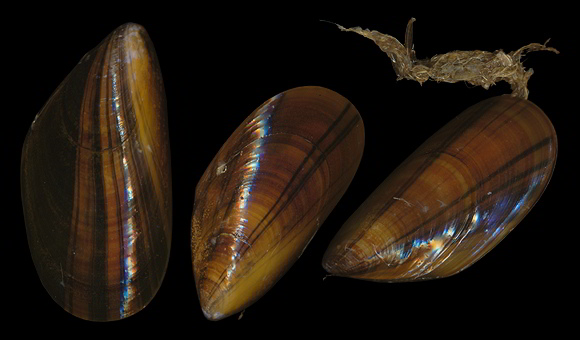 |
| Patterned specimens of the variant ex colore “flavida” Locard, farmed on the rope near Port-Tudy, northern coast of Groix Island. 59-71mm. |
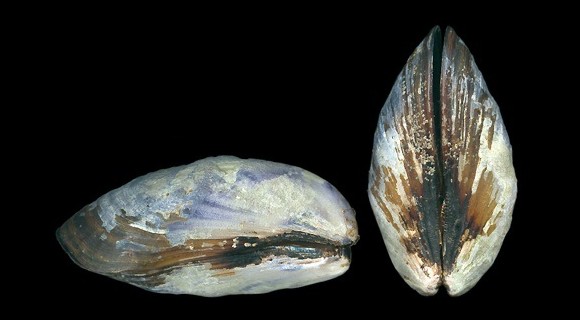 |
Two wild specimens from the English Channel.
Intertidal, les Îles Besnard, la Guimorais, Saint-Malo, NE. Brittany, NW. France. 54-61mm. |
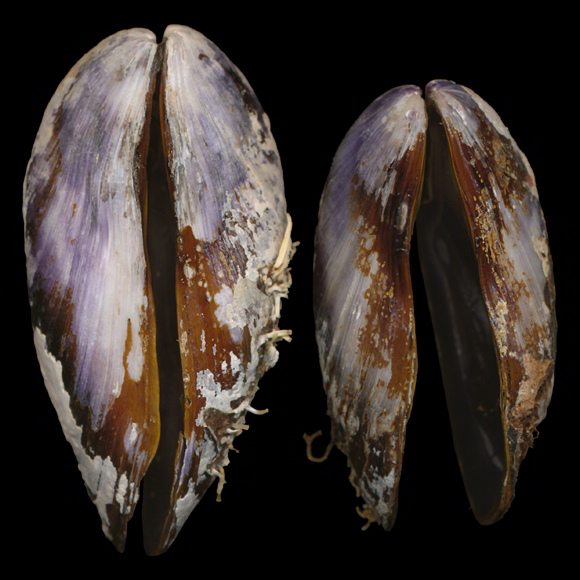 |
| Beached specimens from the lagoon of Rodrigues, Mascarenhas. 55-64mm. |
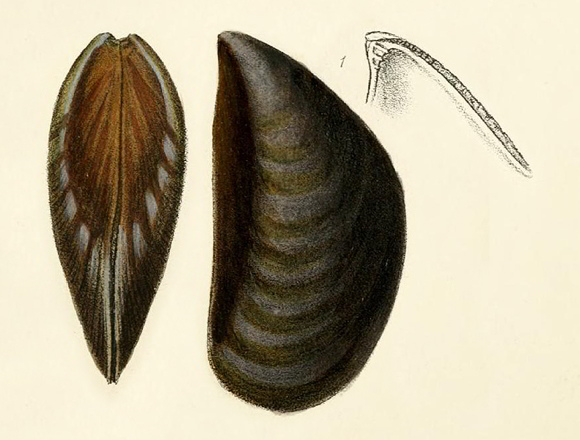 |
| Mytilus edulis in J. G. Jeffreys: British conchology vol. V, London 1869, via BHL. Nota bene that, on these drawings, the umbos look more like those of galloprovincialis. Compare them with those on the first picture on top of page… |
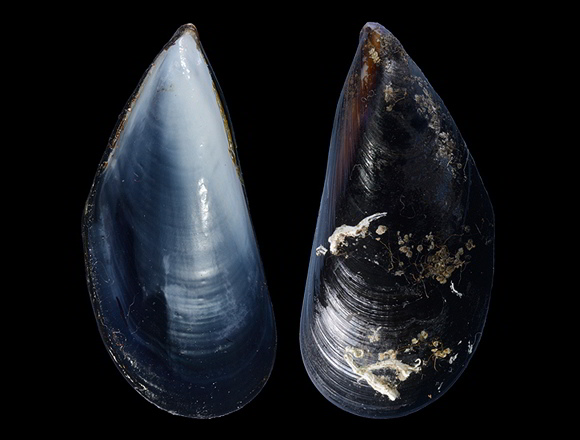 |
Plage de la Vieille Nouvelle, Port-la-Nouvelle, Aude, Occitania, S. France. 73mm. In large and flat specimens, the difference with galloprovincialis can be made by the shape: edulis is more slender, with a less marked posterodorsal angle.
Original picture provided by A. Bertrand (FR).
– (CC BY-NC-SA) – |
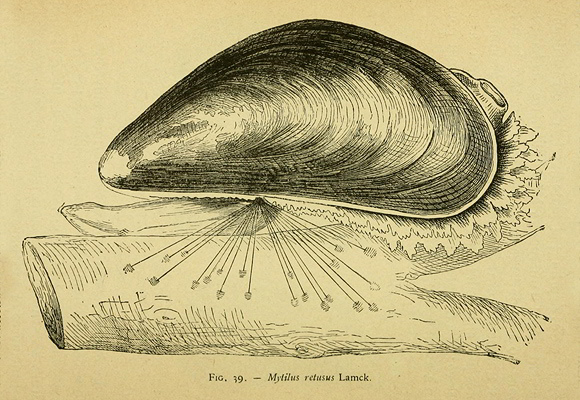 |
Mytilus retusus Lamarck is a junior synonym of edulis.
A specimen pictured in A. Locard: Manuel pratique d’ostréiculture…, Paris 1900, p.86. |
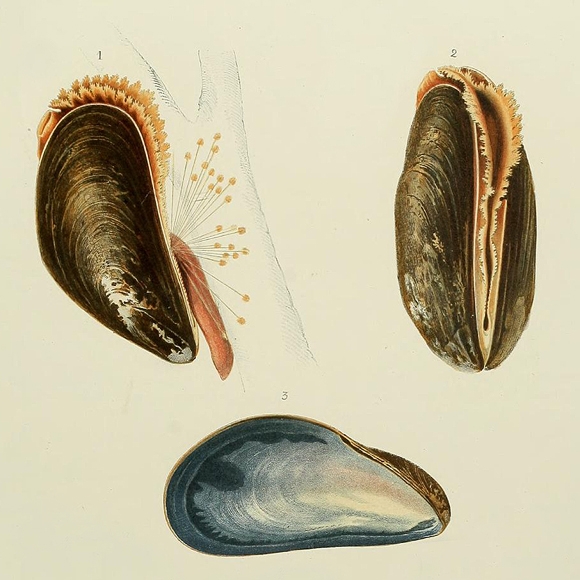 |
The species in Meyer & Möbius: Fauna der Kieler bucht vol. 2, Leipzig 1872, figures 1-3.
The byssal threads are used not only for anchoring, but also for locomotion: « The mussels are not forever tied to the place where they are woven. They migrate, tearing themselves away from older threads and progressively spinning new ones. We have often observed this in aquariums. » – op. cit. p.75. |
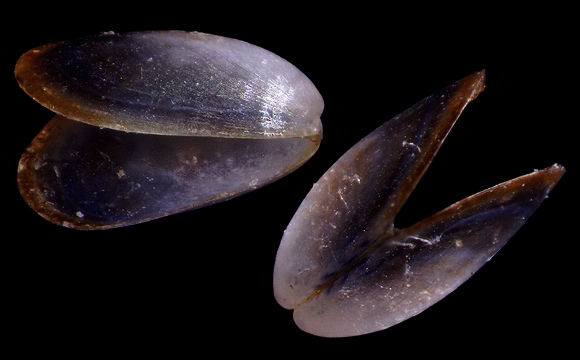 |
| Juvenile from shallow grit, Agde, S. France. 2,3mm. |










